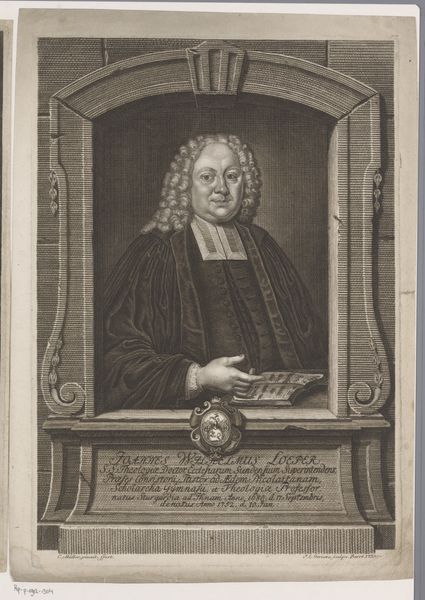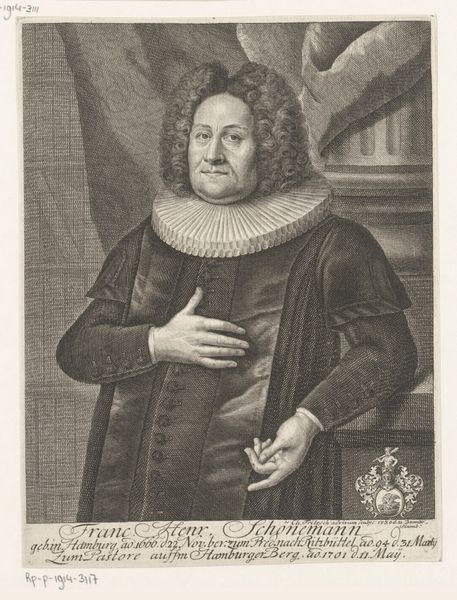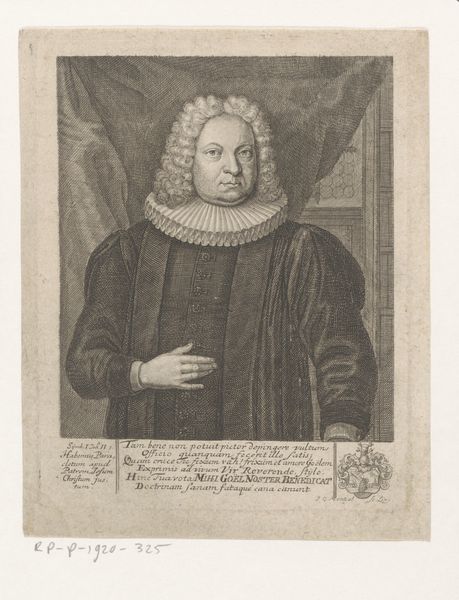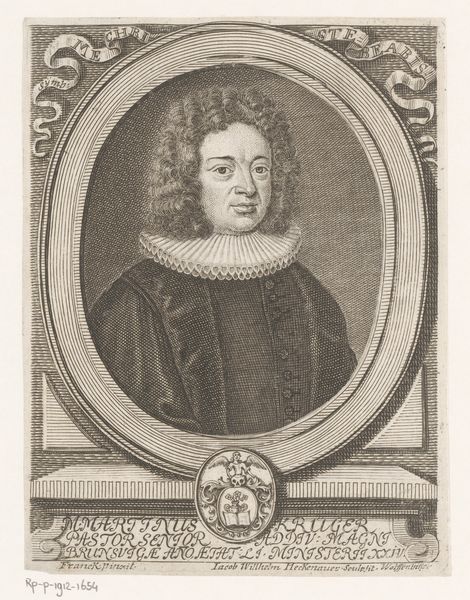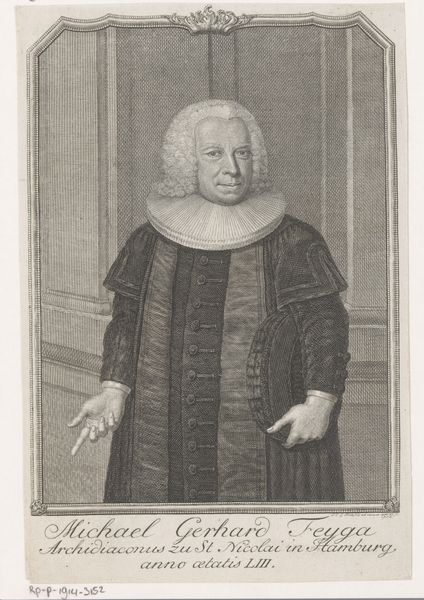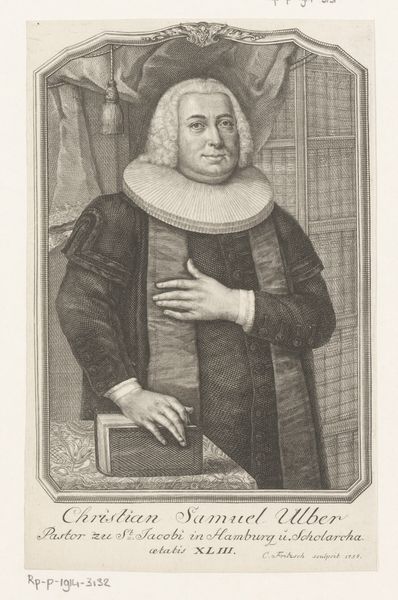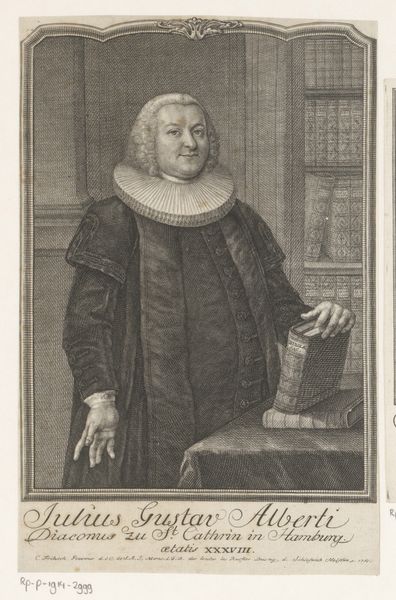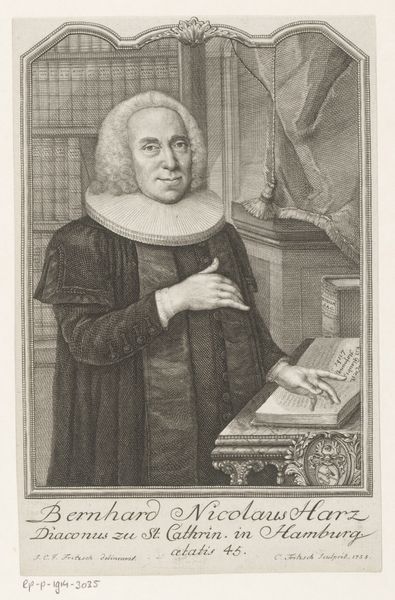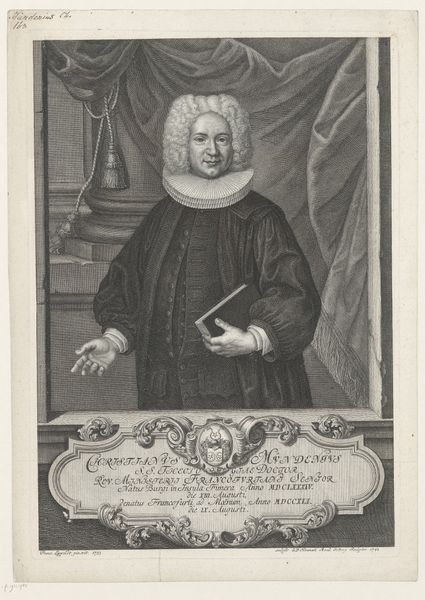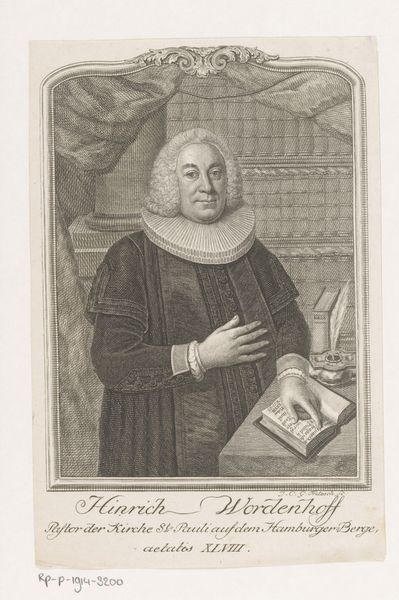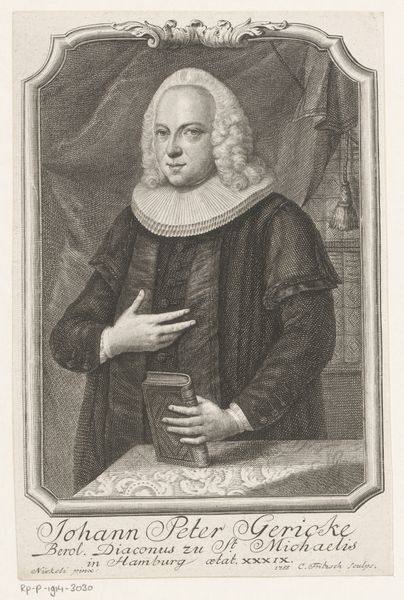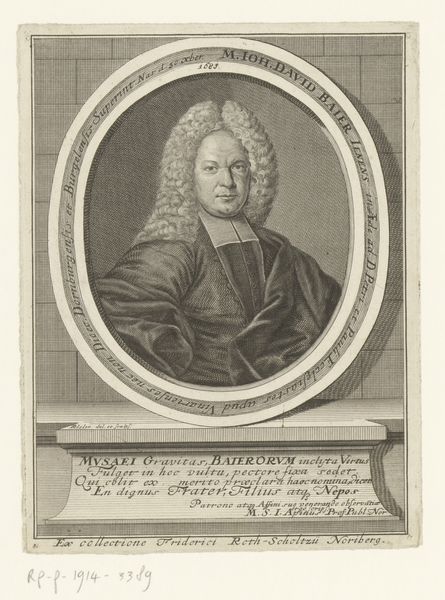
Portret van Johann Friedrich Winckler op 59-jarige leeftijd 1738 - 1802
0:00
0:00
johannchristiangottfriedfritzsch
Rijksmuseum
Dimensions: height 185 mm, width 121 mm
Copyright: Rijks Museum: Open Domain
Editor: So, this is "Portret van Johann Friedrich Winckler op 59-jarige leeftijd," an engraving made sometime between 1738 and 1802 by Johann Christian Gottfried Fritzsch. It's currently at the Rijksmuseum. I'm immediately struck by the sheer density of line work. It feels very… tactile, almost like fabric. What's your take on it? Curator: Looking at this print through a materialist lens, the first thing I notice is the labor embedded within the object. Engraving is a highly skilled, painstaking process. Consider the artist's repetitive action of cutting into the metal plate, the physical demands involved, and the socio-economic status afforded to someone possessing such specialized skills. How does this process inform your understanding of the final image? Editor: I see what you mean. It's easy to overlook the physical effort when you're just looking at the final product. The fact that it's a print also brings up questions of reproducibility and accessibility. Was this intended for a wide audience, or a more exclusive one? Curator: That’s an important point. Printmaking allowed for wider distribution than a unique painting. The scale and the quality of the print would indicate the intended audience and, therefore, its consumption and perceived value within 18th century society. Look closely at the clothing and the book in his hand. Editor: They seem to speak to his status... maybe reinforcing ideas about class and learning in the Baroque era? It is a potent visual display, mediated by skilled artisanal labour and technology. Curator: Exactly. The materials and method of production here aren't just incidental, they actively contribute to the portrait's meaning and its role in reinforcing social hierarchies. Editor: That's fascinating! I had only really considered the subject and the aesthetics of the portrait before. This approach really highlights the human effort behind it. Curator: Focusing on materials and processes really reveals hidden stories within artworks, doesn’t it? There's so much more to unpack than just the surface image.
Comments
No comments
Be the first to comment and join the conversation on the ultimate creative platform.

